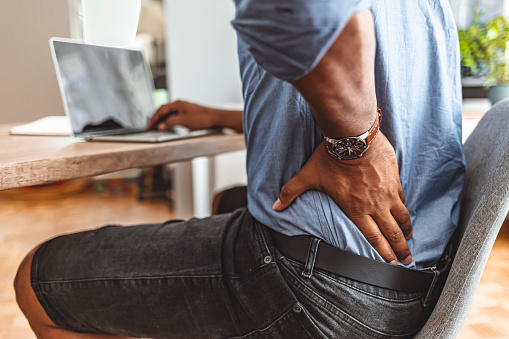
If you are suffering from Hip pain, then one of the key steps to releasing the tension in your body and feeling better is understanding which muscles are causing you to feel pain. While this might seem like an obvious answer, the lower back and hip areas have many deep tissue muscles that can often cause pain due to the stored tension in the area. The following 6 muscles are the key muscles in your hips that are most likely causing you pain. By knowing these, you can choose exercises that specifically target those hip flexor muscles in order to release the tension.
1.Iliacus Muscle
The Iliacus muscle is a key hip flexor muscle that can become tightened when one is sitting on a chair over a prolonged period of time. Anatomically, this muscle connects the top of the hip through the inside of the pelvis area and ends up connected to the top of the femur. In order to touch this muscle, you would need to press your thumb on the inside of your hip bone around 2 inches above the waistline.
This muscle is predominantly used in jumps or kicks. It can also be incredibly important when you are doing sit-ups.
2.Tensor Fasciae Latae
Tensor Fasciae Latae pain is another incredibly common thing dot those who sit for many hours. The TFL muscle is located in the outer front of your hip. This is a particularly long muscle as it extends all the way from your knee to your lower back. The length of this muscle helps provide stability and is incredibly important for activities such as walking, running, and cycling. Pain in this area can often cause instability.
3.Psoas
Another particularly large hip flexor muscle, the Psoas muscle is located in the front area of the body and connects the top of the femur to the lumbar vertebrae. This is a key muscle in the connection between the lower and upper body. This muscle is part of the Iliopsoas complex, which includes the Psoas and the Iliacus muscles.
The Iliopsoas has a number of trigger points that you can use in order to release the tension in these muscles. The QL claw can be a particularly effective tool as it can help you reach those deep muscles easily. These points are located in the lower back and upper thigh and can be targeted through specific exercises.
With the knowledge of which muscles can cause hip pain targeting those areas through exercise becomes easier. This allows you to live your life without as much pain and strain on your body.
















